Effective Strategies for Tooth Extraction Pain

Introduction
Tooth extraction pain is a fairly common dental procedure, and it often leads to a concern shared by much of the population: the pain management that follows. Understanding the many effective tooth extraction pain strategies can be key to a comfortable recovery. Individual experiences with tooth extraction pain vary widely from expert to expert. An essential factor is finding what suits you best, which must start with professional advice. This comprehensive approach provides you not only with pain relief but also a quick and healthy recovery.
Procedure for Overcoming Tooth Extraction Pain After 7 Days
While we are talking about tooth extraction pain, it is a relatively common dental procedure, even though sometimes it can certainly lead to prolonged discomfort, especially when this whole process becomes worrying and tooth extraction pain after 7 days. Although this process is not often exceptional, it can still be disturbing and normally requires special attention and care. We present a comprehensive approach to effectively manage and overcome this unpleasant pain.
Usually, the tooth extraction pain reaches its peak in the first two to three days and it gradually decreases thereafter. However, in some cases, some of the lucre can certainly experience long-term discomfort or the return of pain after a full week. All this can be due to quite different reasons, including infection, dry sockets, and even damage to the surrounding tissues.
If you have tooth extraction pain after 7 days, the first and most important factor is to call your dentist. These experts can assess the situation to rule out any complications such as infection or dry bed – the condition where a blood clot at the extraction site does not develop breaks loose or dissolves before the wound heals.
In the meantime, here are some strategies you can use to manage this tooth extraction pain:
- Medications: Over-the-counter pain relievers can certainly be effective. In many cases, your dentist can prescribe stronger pain relievers. A key factor is to follow the prescribed doses and schedule.
- Cold pack: Putting a cold pack on your cheek could help reduce swelling and this all leads to less pain. It is very important to follow this process with intervals – 20 minutes on and 20 minutes off. It is one of the ways to mitigate the tooth extraction pain
- Salt Water Rinse: After the first 24 hours, a gentle warm salt water rinse can certainly help soothe the affected area and keep it clean. It is important to know that it should be done several times a day, especially after eating.
Process for faster healing pain reduction:
- Soft diet: It is quite an important factor to stick to a soft diet so that you can avoid aggravation of the extraction site. This soft diet also includes foods such as yogurt, pudding, and soup.
- Rest and Elevation: Rest is quite key, but it’s also helpful to keep your head elevated as much as possible to reduce swelling and easily to get rid of tooth extraction pain
- Oral hygiene: One of the most important factors is to maintain oral hygiene, but you should be very gentle around the extraction site. It is recommended to avoid vigorous rinsing or spitting for the first 24 hours.
- Avoid harmful habits: As the two most harmful habits are usually: smoking and drinking alcohol, these habits can hinder your healing and are harmful to mitigate the tooth extraction pain. Likewise, avoid using any kind of straw as the act of sucking can certainly dislodge the blood clot.
In some cases, you may need some additional professional care:
- Dressings and gels: Your dentist can of course apply medicated dressings or gels to the extraction site, all of which will help with healing and reduce your tooth extraction pain.
- Treatment for dry socket: If the cause is dry socket, the dental specialist or the so-called gastroenterologist will be tasked with cleaning the area and applying a medicated bandage and all this will lead to healing of your tooth extraction pain.
- Antibiotics: If there is any infection, antibiotics will normally be prescribed.
While tooth extraction pain after 7 days can certainly be a cause for concern, understanding all of these proper procedures and following them can go a long way in alleviating your discomfort and speeding up that all-important healing from unpleasant tooth extraction pain. It is crucial to always consult your dentist for any personalized advice and treatment. Each individual’s healing process is unique, and what works for one patient does not mean it will work for another patient. Any patient has a different tooth extraction pain.With proper care and attention, overcoming this unpleasant and long-lasting tooth extraction pain , and all this leads to an easier and more comfortable recovery.
Tips And Insights for Simple Extraction Tooth

Understanding a simple extraction tooth procedure usually involves the removal of a tooth that is visible in the mouth, usually due to decay, trauma, or crowding. Unlike surgical extractions, simple extractions are much less invasive, but they are performed on teeth that can be seen in the mouth.
Pending preparations for extraction:
- Consultation and diagnosis: A thorough dental examination, including x-rays, can be vital to assess the vital condition of the tooth and surrounding bone.
- Medical history review: It is quite important to inform your dentist about all the medications you are taking and include your medical history to avoid any complications.
- Understanding the procedure: The dentist in charge will explain all the essential steps of the extraction, helping you set realistic expectations.
The extraction process:
- Local anesthesia: A significant amount of local anesthetic is administered to numb the area around the tooth, and this process provides a pain-free dental experience.
- Loosening and removing teeth: Using a variety of specialized instruments, the dentist quite gently rocks the tooth back and forth to loosen it from the jawbone and any ligaments before extracting it.
- Post Extraction Care: Immediate care of course includes biting down on gauze to help control bleeding and clot formation.
Essentials of pain management during simple extraction tooth
- Medications: Over-the-counter pain relievers, or any prescription medications, can of course be used to manage all of this tooth extraction pain discomfort.
- Cold compress: Placing ice packs on your cheek near the site of that hot extraction can reduce swelling and ease your tooth extraction pain.
- Rest and recovery: A key factor is normally limiting any physical activity and ensuring adequate rest helps you recover faster and smoother.
- Diet: Eating soft food and avoiding all hot drinks help the healing process to some extent and relief of tooth extraction pain.
- Oral hygiene: Of course, gentle rinsing with salt water and avoiding the extraction site when brushing the area can promote healing and prevent any infection.
While simple tooth extractions are generally safe, in certain cases potential complications such as a dry socket or some type of infection can occur. In those cases the tooth extraction pain can be stronger. It is crucial that you consult your dentist immediately if you experience any severe pain, swelling, or bleeding beyond this expected recovery period.
Understanding this simple tooth extraction procedure and following any post-operative care advice can greatly ease your tooth extraction pain and anxiety. A well-informed patient and a qualified dentist are the key factors for a successful and painless tooth extraction experience. For any problem, it is very important to consult your dentist for medical advice or care about the tooth extraction pain.
Healing Dynamics about how long does it take a pulled tooth to heal
The question is how long does it take a pulled tooth to heal? And how long can tooth extraction pain be feeled. Let’s start with healing time after tooth extraction. Of course this varies depending on several interesting factors, including the complexity of the extraction, as well as the overall health of the patient and usually even adherence to post-extraction care. This overall treatment process can be divided into several stages:
- Initial healing phase (1-2 weeks): Immediately after the extraction it is normal for a blood clot to form in the socket, which is quite crucial in your healing from tooth extraction pain. The first two weeks are quite critical for the stabilization of the clot as well as the initiation of soft tissue healing.
- Bone Remodeling Phase (3-6 months): The jawbone is certainly undergoing a remodeling process where the socket begins to slowly fill with bone. This stage is a very important element for those considering dental implants as a future tooth replacement option.
- Tissue maturation phase (6-12 months): The final phase involves the maturation of the gingival tissue as well as the complete integration of the new bone into the socket.
Important factors affecting overall healing time
- Age and Health: Older patients or those with certain health conditions such as diabetes are likely to experience slower healing of tooth extraction pain.
- The complexity of Extraction: Impacted or broken teeth can of course require a more involved procedure, or potentially prolong the healing of the tooth extraction pain.
- Oral Hygiene: Good oral hygiene practices can significantly affect the speed and quality of healing to some extent.
- Lifestyle Choices: Smoking and alcohol consumption can hinder the healing process of tooth extraction pain, and can even increase the risk of complications such as dry sockets.

Elements you need for a quick recovery
- Follow the dentist’s instructions: Adhering to the instructions of a medical professional for post-operative care is a very important element.
- Rest and nutrition: Adequate rest and a diet rich in vitamins and minerals support and accelerate the entire body of healing process from tooth extraction pain.
- Avoidance of certain activities: Abstaining from smoking, drinking through straws as well, and any rigorous physical activity in the initial days after the extraction can certainly prevent the removal of the blood clot.
If you experience any severe tooth extraction pain, swelling, or signs of infection, the key factor would be to contact your dentist immediately. Timely intervention can certainly alleviate any complications and help the healing process of tooth extraction pain. Understanding these healing dynamics can benefit you in your successful tooth extraction recovery. In general, it can take anywhere from a few weeks to a few months for an extracted tooth to fully heal, but this depends on various individual factors. Any instructions given to you by any medical professional should be followed, as well as maintaining good oral hygiene and adopting healthy lifestyle habits to some extent can certainly speed healing from tooth extraction pain and thus ensure you have a smooth recovery process. Each person’s uncomfortable healing journey is unique, and if you do, patience combined with proper care will be vital to a successful outcome of the tooth extraction pain.
Understanding Teeth Pulled Bleeding Effectively
We already know about the whole process of tooth extraction that it is a common dental procedure and is quite often followed by a natural response: teeth pulled bleeding. This bleeding is of course a normal part of the healing process, but understanding how to effectively manage it is key to a smooth recovery. It is quite important to have them see all the more effective causes such as the prevention and effective management of bleeding with tooth extraction.
Bleeding with pulling teeth or so-called teeth pulled bleeding is a typical occurrence after extraction. When a tooth is extracted, it usually leaves behind an open wound on the gums and possibly even the jaw. If the blood vessels in this area are damaged, this leads to bleeding. Usually, the body of course reacts by forming a blood clot, but first, it is important to stop the bleeding and start the healing process.
Management of bleeding after tooth extraction
- Bite the gauze: Immediately after the extraction, the medical professional will place the gauze over the extraction site. Chewing on this gauze for 30 to 45 minutes certainly helps to form a clot by applying pressure to that hot area.
- Proper rest: After the procedure, one of the key points is to rest and avoid any strenuous activity, as increased blood pressure can certainly worsen bleeding from tooth extraction.
- Elevated head position: If you keep your head elevated above the level of your heart, especially during your sleep, this process reduces bleeding and you don’t feel a tooth extraction pain.
Advanced techniques and tips for post-extraction bleeding
- Change the gauze as needed: If all the bleeding continues, change the gauze every 30 to 45 minutes. Make sure that gauze is placed directly over the extraction site.
- Cold compress: Applying a cold compress to the cheek where all your tooth extraction pain is coming from can probably help minimize swelling and reduce bleeding.
- Avoiding certain activities: Refrain from smoking, as well as vigorous rinsing and even drinking through a straw for at least 24 hours after the extraction, as those factors can dislodge that clotting and lead to increased bleeding from tooth extraction.
While some post-extraction bleeding is to be expected, excessive or prolonged bleeding to any degree can certainly indicate any problem. If heavy bleeding continues for more than 24 hours, the key moment will be to contact your dentist. These medical professionals can provide you with additional treatment, such as placing a special bandage on the wound to promote clotting.
Bleeding with tooth extraction is a normal, natural part of the healing journey after tooth extraction. One of the most important elements is to follow the instructions of those dental experts and take proper care at home, and all this will lead to effectively managing this bleeding. Each individual’s entire healing process is unique and different, and patience, of course along with careful care, is vital to a successful and healthy recovery from tooth extraction pain.
Conclusion
In conclusion, above we have mentioned quite a few tips on how to deal with tooth extraction pain, but this whole process requires a multifaceted approach that combines professional guidance, as well as self-care, and a deep understanding of the healing process from tooth extraction pain. Tooth extraction, although quite common, can certainly lead to considerable discomfort; however, with the many correct strategies, this pain can be effectively managed, providing you with a smoother as well as more comfortable recovery. One of the key elements for alleviating the pain during tooth extraction lies in the observance of all those instructions for post-operative care which are most often provided by dental professionals. This includes taking prescribed pain medication as well as applying cold compresses to reduce swelling and practicing gentle oral hygiene to prevent any infection. Lifestyle adjustments, such as avoiding any strenuous activities, as well as maintaining a soft diet, and refraining from smoking or consuming alcohol, all these factors play a key role in reducing this unpleasant discomfort and speeding up healing.

